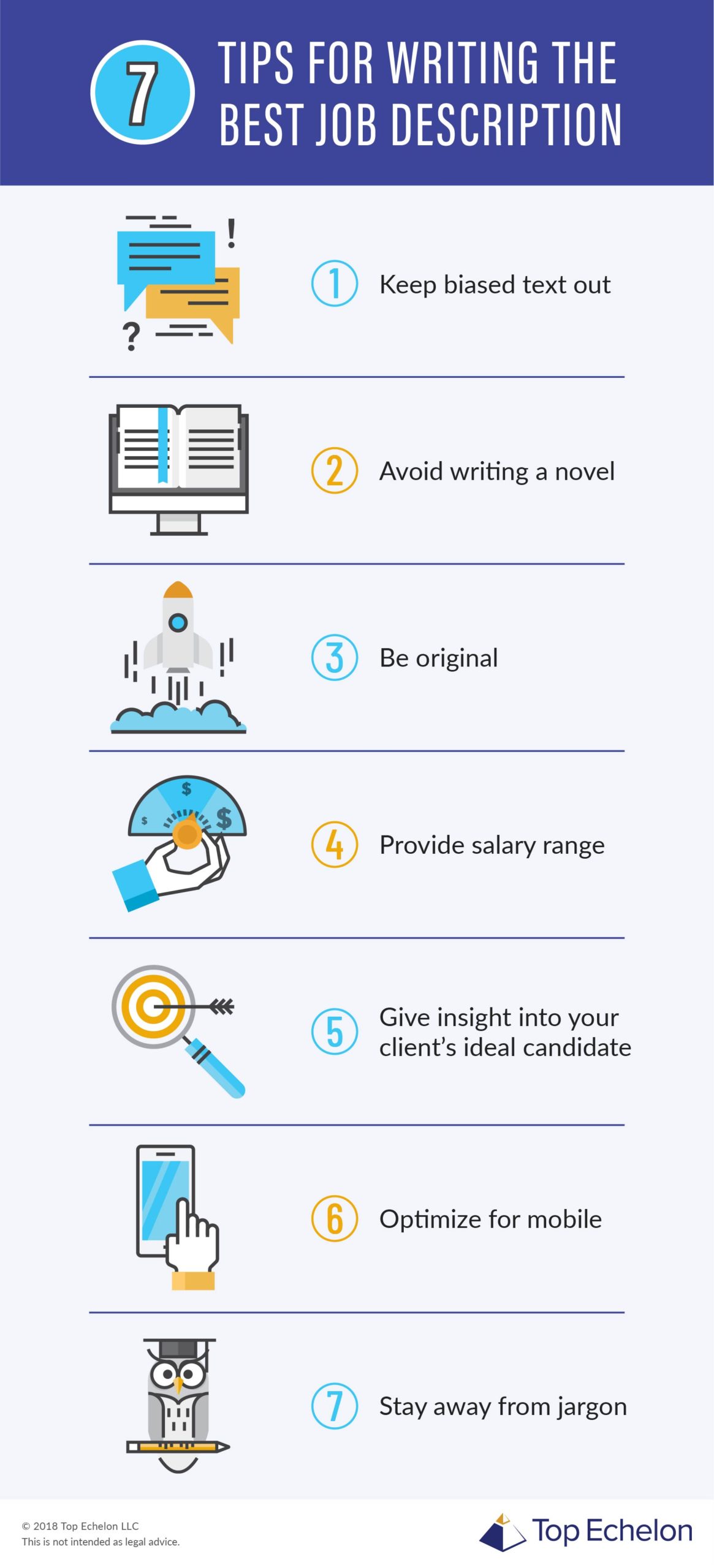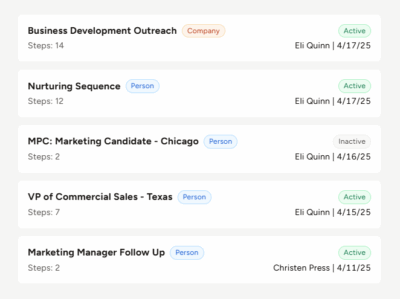Job descriptions launch your recruitment process and set the tone for the type of applicants you attract. Do you know the key to crafting an appealing job posting? Familiarize yourself with writing job descriptions best practices to start your hiring process off on the right foot.
Writing job descriptions best practices
Without a stellar job description, you may have trouble getting qualified candidates to apply.
Here are seven job description best practices you can use to make sure you create the best job description possible for your client’s open position:
1. Keep biased text out of it
Some of the wording you use in a job description can unintentionally alienate groups of people. And, some text can be biased towards people of a certain age or gender.
According to the Harvard Business Review (HBR), word choice determines your application pool. Someone reading a biased job description may not want to apply for the position.
For example, you can accidentally spur age discrimination in hiring by using words and phrases like digital native, guru, and youthful.
Some studies recommend avoiding the use of language such as dominate so as not to alienate female candidates from applying. Likewise, words such as supportive may unintentionally dissuade male candidates from applying.
Making subtle tweaks when writing a job posting can both widen your applicant pool and save you from unintentionally discriminating against certain groups.
2. Avoid writing a novel
The best job descriptions are thorough without being lengthy.
Generally, your job description length depends on the type of job. You might write a job description that is 500 words for one client and an 800-word description for another.
You don’t want to ramble in your job description by writing huge paragraphs. Keep sections short and to the point.
Using bullet points can further help you optimize your description for the average job seeker who is reading through dozens of potential postings.
Create headers for the different sections of your job description, including job title, job description, responsibilities, qualifications, and benefits.
3. Be original
Templates are great. They can save you significant time and energy. And, using templates lets you post your job description more quickly, which can help you avoid missing out on candidates.
However, relying on an outdated template can make your job description stiff. You don’t want every job description you create to sound the same. And if you write job descriptions for all your clients, you need variety to capture each client’s company culture.
Create original job descriptions that highlight why a job seeker would want to apply to your client’s company. Avoid writing generic descriptions that sound like everything else out there.
4. Provide a salary range
Including a salary range in your job description can help you attract the right candidates and avoid surprises.
One reason a candidate might turn down a job offer is due to a low salary. When you are upfront with the maximum amount your client is willing to pay, you can weed out candidates with high salary expectations before investing time into them.
5. Give insight into your client’s ideal candidate
Describing your client’s ideal candidate in the job description can improve your chances of getting the right people to apply.
If you are specific with what kind of candidate your client is looking for, you can narrow down your candidate pool and save time from reading through resumes.
Be sure to avoid using discriminatory language when describing the ideal candidate for the job.
6. Optimize for mobile devices
Forty-five percent of job seekers search for job openings at least once per day on their mobile devices. If your job descriptions look clunky on social media, potential candidates might skip over your client’s position.
Optimize your job descriptions by making sure they are readable on mobile devices. Keep an eye out for text size, yours or your client’s logo, and titles to verify the job description is mobile-friendly. View the job description on both a computer and mobile device.
Sometimes, candidates who use their mobile devices are multitasking. You may consider formatting your job description so potential applicants can skim through it.
7. Stay away from jargon
Jargon, language used by a specific group, can be a deterrent for top talent. Although jargon might help narrow down your applicants to people within the industry, it can also isolate people of a certain age or gender.
Putting too much jargon in your job description can leave you with text that is confusing, frustrating, and disengaging.
According to one study, over one-third of job descriptions use confusing jargon. Applicants reading a job description saturated with jargon might be unsure about the role or whether they qualify, especially for entry-level jobs.
So, what kind of lingo do recruiters and companies typically put in their job descriptions? Some of the common, confusing jargon in job descriptions include:
- Ninja
- Guru
- Wizard
- Rockstar
- Entrepreneurial environment
- KPI (key performance indicators)
- OTE (on-target earnings)
- Self-starter
Whether you write the job description or your client, keep it clear, thorough, and specific without excessive jargon.









